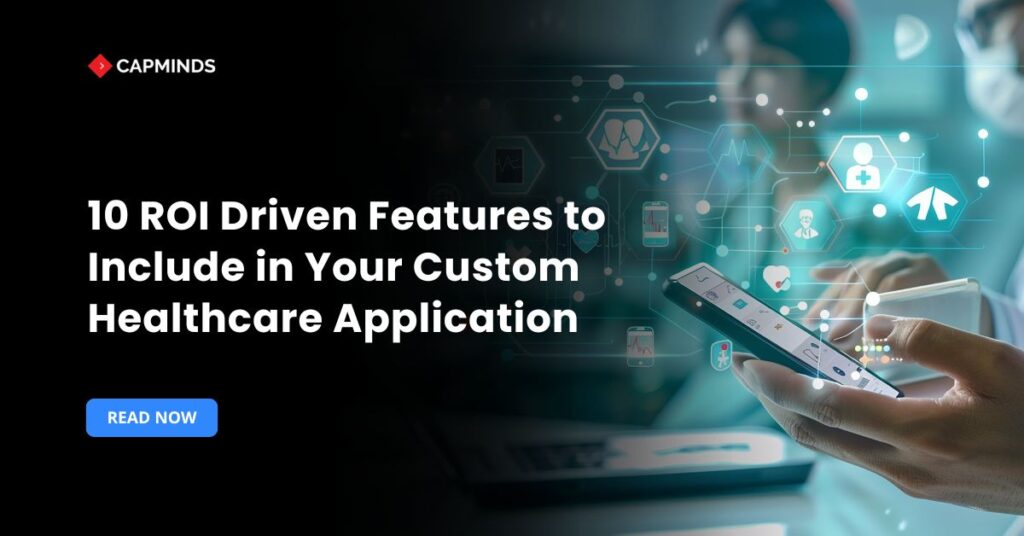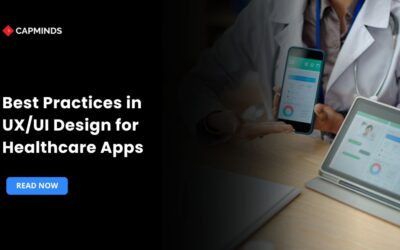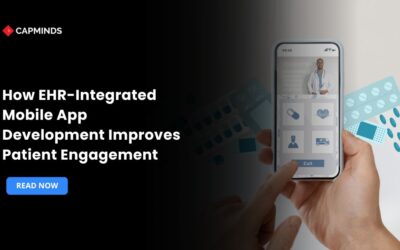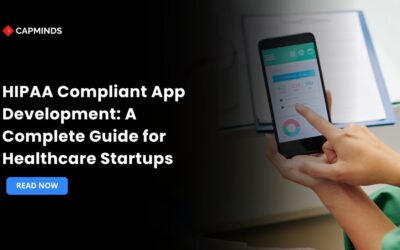10 ROI Driven Features to Include in Your Custom Healthcare Application
In today’s healthcare landscape, technology investments must deliver measurable returns. Increasing ROI in healthcare means cost savings, improved patient outcomes and satisfaction, and greater efficiency and profitability. Custom healthcare apps can achieve these gains by automating workflows, improving care quality, and unlocking new revenue streams.
Modern healthcare mobile app development services empower organizations to automate workflows, engage patients, and create new revenue channels. The result? A measurable rise in care quality and operational efficiency.
The following ten features are proven to boost ROI across patient care and operations. Each feature improves outcomes, cuts costs, or generates revenue, or all three, when tailored into a custom healthcare solution.
1. Automated Appointment Scheduling & Patient Check-In
Allowing patients to book and check in via a mobile app or portal slashes administrative costs and wait times. Automated scheduling synchronizes calendars across departments, minimizing overbookings and no-shows. Patients can receive reminders and check in remotely, which reduces long wait lines and lowers staffing burdens.
This results in smoother patient flow and higher capacity, translating to reduced labor costs and higher patient throughput (and revenue) without extra resources. In short, smart scheduling pays off by cutting overhead and improving utilization.
2. Telehealth & Remote Patient Monitoring
Integrating secure video visits, chat, and remote-monitoring devices extends care beyond the clinic. Virtual care features let clinicians consult patients from anywhere, reducing the number of in-person visits and easing facility constraints. This means lower operational costs (less need for exam room space and staff for routine visits) and the ability to serve more patients.
Continuous home monitoring (e.g., wearables, IoT sensors) and customized alerts help catch complications early. Together, these tools improve chronic-disease outcomes, cut readmissions, and expand your patient reach into underserved areas – all of which drive revenue growth and cost savings.
3. EHR Integration & Interoperability
Custom apps that integrate with Electronic Health Records and other systems eliminate duplicate data entry and fragmented information. By pulling in patient histories, labs, and imaging in real time, providers can make faster, more accurate decisions.
- As one source notes, EHR integration centralizes patient data across departments, removing redundant paperwork and improving care coordination.
- The result is fewer medical errors and avoided duplicate tests, which cuts costs and liability.
Real-time data access also means clinicians work more efficiently (reducing labor costs) and patients get timely treatments, improving the quality of care and satisfaction.
Related: 7 Mistakes to Avoid in Custom EHR Development (And How to Fix Them)
4. Staff Communication & Collaboration Tools
Real-time messaging, alerts, and team channels keep care teams in sync. Push notifications for critical lab results or patient status changes ensure timely responses and prevent costly delays. Department-based chat and shift-management features streamline handoffs and emergency coordination.
By smoothing communication, these features speed up workflows and reduce clinical errors. Faster communication means providers spend less time tracking colleagues down or redoing work, which directly lowers labor costs. The payoff is safer, more efficient care, improving outcomes while cutting waste.
5. Inventory & Asset Management
Built-in inventory tracking prevents waste and stockouts of supplies and medications. Custom apps can monitor real-time stock levels and send automated reorder alerts when items run low.
This ensures resources are used efficiently and critical supplies are always on hand. In practice, better inventory control means avoiding emergency orders and expired stock, which saves money. By minimizing overstocking and last-minute purchases, hospitals and clinics cut operational expenses. In short, visibility into supply usage leads to smarter purchasing and reduced costs.
6. Automated Billing & Revenue Cycle Management
Streamlined billing and claims processing features maximize revenue capture and reduce errors. Custom software can automatically generate bills, verify insurance, and submit claims to payers. This automation ensures quicker payments and far fewer billing mistakes.
Faster reimbursements improve cash flow, and fewer denied claims mean more revenue retained. With up-to-date payment dashboards and alerts, staff spend less time on collections. Ultimately, automating the revenue cycle lowers administrative burden and drives financial efficiency, directly boosting the bottom line.
7. Data Analytics & Predictive Insights
Analytics dashboards and AI-driven insights turn data into action. A custom app can compile clinical and operational data to reveal hidden trends, for example, identifying bottlenecks in patient flow or predicting at-risk patients. One expert emphasizes that rich digital records allow providers to “track changes over time and find patterns” to improve care.
By analyzing outcomes and utilization, organizations can spot inefficiencies and pinpoint cost-saving opportunities. Predictive models enable proactive interventions that improve outcomes and avoid expensive complications. In short, data-driven healthcare optimizes both care and finance, increasing ROI by continuously improving processes.
8. Personalized Patient Engagement & Education
Features that engage patients, such as medication reminders, tailored education, and self-management tools, drive better outcomes and adherence. Custom notifications and care plans can prompt patients to follow treatment and track symptoms.
- Research shows that apps with reminders and monitoring help “improve patient adherence to treatment” and empower lifestyle changes.
- Better adherence reduces readmissions and emergency visits, which cuts costs.
- Moreover, educated, engaged patients tend to stay loyal and may use additional services.
By improving engagement, these features enhance satisfaction and retention, ultimately generating more revenue per patient while simultaneously improving health outcomes.
9. Mobile Accessibility & User-Centric Design
A responsive, intuitive app interface maximizes adoption by both patients and staff. When the UI is clean and mobile-friendly, users need minimal training and support. As one source notes, custom apps can be “designed with intuitive interfaces that cater to both staff and patient experiences,”.
High usability means fewer workflow disruptions and fewer help desk calls, saving time and money. It also drives patient adoption (more bookings, adherence, portal use), which increases the value of the app. In effect, great UX design amplifies the ROI of every other feature by ensuring they are used.
10. Security & Regulatory Compliance
Strong security and HIPAA-compliance features protect revenue and reputation. Custom apps must safeguard patient data with encryption, access controls, and audit trails. Robust security prevents data breaches (avoiding fines and lawsuits) and maintains patient trust.
- As healthcare software experts point out, custom systems include “robust protection against data breaches and HIPAA violations,”.
- Investing in compliance reduces the risk of costly penalties and downtime.
- Ultimately, a secure, compliant application is a business enabler, avoiding losses and building confidence that supports patient acquisition and retention.
Each of the above features, from smart scheduling to analytics, is designed to improve outcomes, trim costs, and boost revenue in healthcare operations. When built into a custom application aligned with your organization’s needs, they pay for themselves in efficiency gains and growth.
Related: 10 Must-Have Features for Successful Healthcare Mobile Apps
CapMinds Custom Health Application Development
Transforming your vision into a robust, compliant, and future‐ready solution shouldn’t be a challenge. With CapMinds’ proven expertise in custom health application development, you gain a partner who delivers scalable, secure, and fully HIPAA-compliant solutions, whether you need telemedicine capabilities, patient engagement portals, EHR interoperability, or advanced remote monitoring.
Our team collaborates closely with hospital IT leaders and healthcare technology executives to drive measurable impact, including improved patient outcomes, streamlined operations, and new revenue streams.
Ready to see how a tailored health application can transform your organization? Contact us today for a discovery call and let’s build your solution together.




